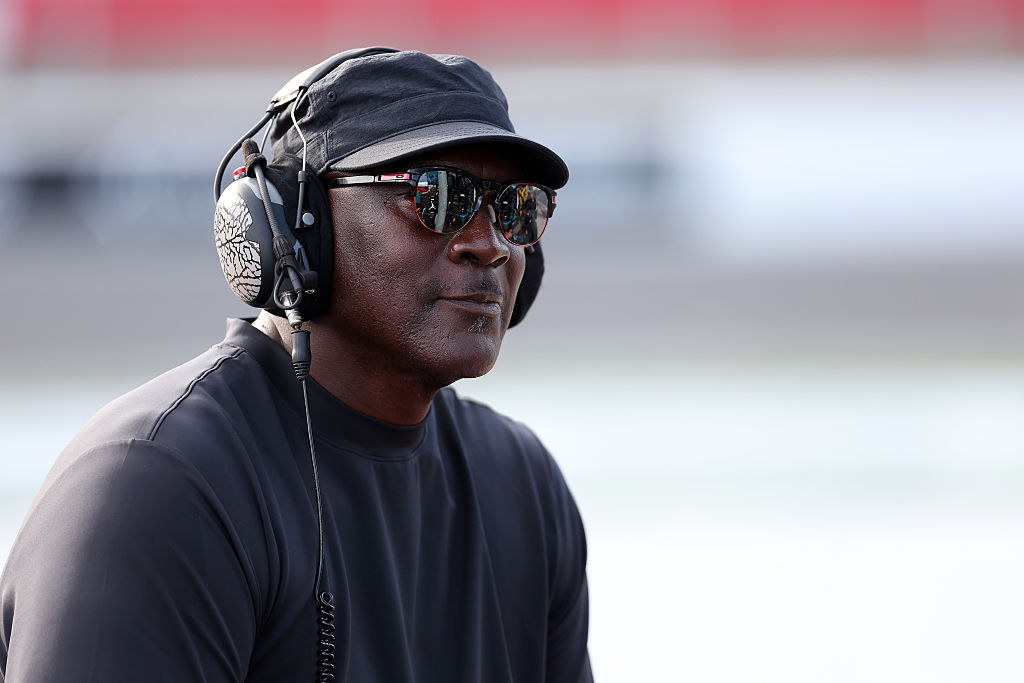Seven Ways to Spend Your Tax Refund
You may want to splurge, but using your tax refund to save for the future or pay down debt is a much better idea — even if not as fun.


You may have already received your tax refund — or you will soon. The average tax refund this year is $2,252, the IRS reported as of mid-February.
When the check arrives or is automatically deposited in your bank account, it can be tempting to indulge in dinners out, add an extra streaming service or buy presents for everyone in the family (and all of your friends, too).
Before you think up a million more ways to spend your refund, consider these seven ways to invest in yourself— and your future — instead. You’ll be happy you did.
From just $107.88 $24.99 for Kiplinger Personal Finance
Be a smarter, better informed investor.

Sign up for Kiplinger’s Free Newsletters
Profit and prosper with the best of expert advice on investing, taxes, retirement, personal finance and more - straight to your e-mail.
Profit and prosper with the best of expert advice - straight to your e-mail.
1. Use your tax refund to build an emergency fund
Earmarking funds from your tax refund to be put into an emergency fund can ensure the money is there when needed.
The best way to set up an emergency fund is to have a portion of each paycheck go directly into a savings account via direct deposit. This ensures consistency and removes the temptation to spend the money before you save it.
A high-yield savings account is an excellent place to save your emergency fund because it offers a higher interest rate than a traditional savings account, allowing your money to grow over time while remaining easily accessible.
The money you set aside from your tax refund can come in handy if your refrigerator gives out. If you're ready to start saving, use our tool below, in partnership with Bankrate, to compare savings rates today.
2. Pay down debt
There's nothing exciting about paying down debt. That is until your statement shows it has been paid in full. What a sense of relief and accomplishment.
Total household debt rose by $93 billion to reach $18.04 trillion in the fourth quarter of 2024, according to the latest Quarterly Report on Household Debt and Credit by the Federal Reserve. Carrying around that much debt can be stressful.
While your tax refund may not pay off a loan or loans, using it to make a payment to pay down a loan is an excellent option if you stand to save money on interest, your credit score needs a boost, or you want to improve your mental health by lowering your debt and reducing your monthly payments.
3. Pay down student loans
If you have private student loans or don’t qualify for federal assistance, using all or part of your tax refund to pay down your balance can be a smart move. According to NerdWallet, approximately 42.7 million Americans have federal student loan debt, which accounts for about 12.5% of the U.S. population.
This growing debt crisis is largely driven by the rising cost of college, which has more than doubled over the past 40 years. In the fourth quarter of 2024, student loan debt increased by $9 billion, bringing the total to more than $1.62 trillion, according to the Federal Reserve.
One way to make a dent in high student loan balances is to use your tax refund to make an additional payment. There’s usually no penalty for making extra payments, and you’ll save money by paying less in interest over time.
Just be sure you carefully document any extra payments you make, and that they are reflected in your next loan statement.
4. Pay down credit card debt
By the end of 2024, credit card debt rose to a record $1.21 trillion, according to the Federal Reserve. What makes that figure even more chilling is that the average credit card interest rate on accounts with balances was a whopping 20.09%, according to Bankrate.
So, if you carry a balance of $5,000, you’ll pay just over $82.56 in interest alone (based on the 20.09% interest rate) during your 30-day billing period.
That may not seem like a lot, but interest adds up quickly. One of the best ways to use your tax refund is to pay down or pay off high-interest credit cards, especially if you're carrying high balances or you're maxed out on several cards.
This rule holds true even if you're tempted to spend more on a rewards credit card to get points or miles.
5. Make a down payment on a new car
If your current vehicle is barely rambling down the road, using your tax refund as a down payment may get you more than just a new ride; you’ll also get reliability, a new warranty, new technology and additional safety features. Plus, using your refund as a down payment can help lower the overall cost of your vehicle loan.
If you're considering an electric vehicle (EV), now may be the time to buy. Changes to federal policy could phase out the $7,500 EV tax credit and other incentives, increasing the overall cost of EV ownership. Using your tax refund toward an EV while credits are still available can maximize savings and help offset the purchase price.
Moreover, potential tariffs on automotive imports from Canada and Mexico could soon increase vehicle prices by up to 25%. If you to use your tax refund as a down payment can help you secure favorable terms before these price hikes take effect.
6. Invest the funds
If you're considering investing your tax refund for short-term goals like purchasing a home or car, it's important to choose investment vehicles that align with your timeline and risk tolerance.
If you're considering investing your tax refund in the short term, the stock market may not be the best option due to its volatility. Instead, consider more stable investment vehicles such as certificates of deposit (CD) or money market accounts.
As of March 2025, some institutions are offering 1-year CDs with annual percentage yields (APY) exceeding 5%. Similarly, money market accounts are offering competitive rates of APY of up to 4.50%.
These options allow you to grow your tax refund with minimal risk, aligning well with short-term financial objectives.
7. Make some home repairs
If you’ve been putting off replacing old windows or carpet in your home, now may be the time to put that tax refund to good use. The IRS encourages homeowners to renovate their homes by providing tax deductions for certain types of improvements.
While some renovations don’t qualify, many are eligible if they are permanent, major renovations that add value to your home. In fact, you can save up to thousands of dollars on renovations or improvements that are energy efficient. These may include adding an energy-efficient HVAC system, energy-efficient windows or additional insulation, or modifying doorways for wheelchairs and walkers.
If you intend to sell your home soon, you might want to focus on adding the home features today's buyers want most.
When is the tax filing deadline this year?
The deadline for personal federal tax returns is April 15, except for taxpayers living in Maine or Massachusetts. You have until April 17 due to state holidays.
Related Content
Profit and prosper with the best of Kiplinger's advice on investing, taxes, retirement, personal finance and much more. Delivered daily. Enter your email in the box and click Sign Me Up.

For the past 18+ years, Kathryn has highlighted the humanity in personal finance by shaping stories that identify the opportunities and obstacles in managing a person's finances. All the same, she’ll jump on other equally important topics if needed. Kathryn graduated with a degree in Journalism and lives in Duluth, Minnesota. She joined Kiplinger in 2023 as a contributor.
-
 Four Essential Michael Jordan Quotes on Life in Retirement
Four Essential Michael Jordan Quotes on Life in RetirementThe GOAT of basketball on how he spends his time and what he misses.
-
 Three Critical Tax Changes Could Boost Your Paycheck in 2026
Three Critical Tax Changes Could Boost Your Paycheck in 2026Tax Tips The IRS predicts these tax breaks may change take-home pay in 2026. Will you get over $1,000 in tax savings?
-
 Avoid These Four Mistakes in the Run Up to Retirement
Avoid These Four Mistakes in the Run Up to RetirementYou can learn a thing or two from the retirees who went before you.
-
 Where to Deposit Your Social Security Check
Where to Deposit Your Social Security CheckIf you receive Social Security checks, where you deposit them matters because it can help grow your earnings. See the best options.
-
 Pickleball is Causing Costly Eye Injuries. Are You Keeping Yourself Safe?
Pickleball is Causing Costly Eye Injuries. Are You Keeping Yourself Safe?The nation’s fastest growing sport is sending more players to the ER and adding to health care costs. Here’s how to protect your eyes (and your wallet).
-
 Pet-Friendly Hotels That Go Beyond 'Dogs Allowed'
Pet-Friendly Hotels That Go Beyond 'Dogs Allowed'Here are some of the best destinations to take your pet on vacation.
-
 The OBBB Ushers in a New Era of Energy Investing: What You Need to Know About Tax Breaks and More
The OBBB Ushers in a New Era of Energy Investing: What You Need to Know About Tax Breaks and MoreThe new tax law has changed the energy investing landscape with expanded incentives and permanent tax benefits for oil and gas production.
-
 From Camping to Boating: Here's How to Stay Connected Off-Grid
From Camping to Boating: Here's How to Stay Connected Off-GridThere's nothing quite like the peace of off-road adventures. However, ensure you have a stable connection in case you need it.
-
 How to Protect Your Home From Keyless Break-ins
How to Protect Your Home From Keyless Break-insWhile smart locks enhance home security, skilled intruders may bypass them. Here's how to strengthen your defenses.
-
 Ten Ways Family Offices Can Build Resilience in a Volatile World
Ten Ways Family Offices Can Build Resilience in a Volatile WorldFamily offices are shifting their global investment priorities and goals in the face of uncertainty, volatile markets and the influence of younger generations.